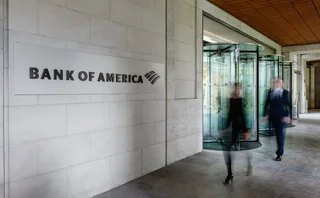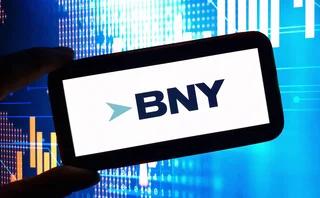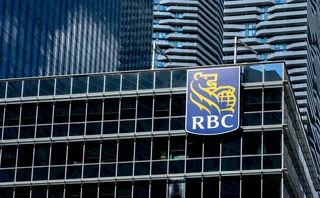
Adding sparkle to BBVA’s ‘diamond’
Manuel Sánchez has been schooled at the world’s best institutions, lived in the most chic cities and mastered banking. His latest experience, at Mexico-based bank BBVA Bancomer, is giving him a taste of something new.
Many emerging markets have suffered from a so-called ‘brain drain’ – the migration of native, highly educated professionals to the developed world. But Manuel Sánchez did the reverse. Originally from Spain, his career has taken him around the globe but since 2002 he has been based in Mexico, where he is in charge of risk management for the Mexican subsidiary of Grupo Financiers BBVA Bancomer (GFBB).
The BBVA group has operations all over the world but the Mexican branch is its largest. Sánchez describes the Mexican division as “the jewel in the crown”, and his aim is to make it sparkle.
When Sánchez arrived in Mexico, BBVA Bancomer was still suffering from the tequila crisis of 1994, when an overvalued exchange rate, weak financial regulation and preponderance of short-term debt had led to the devaluation of the peso. As a result, banks were crippled by non-performing loans and distressed assets.
Sánchez has played a major role in helping the bank finally recover from the crisis, and ensuring a firmer foundation for the future. For example, in 2000, 15% of the bank’s total assets were classified as non-performing. Today that is down to 3%. The bank achieved this through managing non-performing loans and restructuring foreclosures. Yet it also had to take losses, particularly in industries where it had its largest exposures, such as steel and textiles – which were some of the sectors most affected by the crisis, Sánchez says.
Despite the challenges the bank faces – both past and present – Sánchez relishes the opportunity and is optimistic about the future of both the bank and the Mexican economy, for which he envisages a “brighter future”. Sánchez’s confidence is boosted by rising steel prices, the improved competitiveness of Mexican textiles and increased lending to the private sector.
Sánchez believes Mexico’s potential remains largely untapped. For instance, he highlights that 80% of the population does not have a bank account, providing the bank with a major growth opportunity. “It is the perfect definition of an emerging market,” says Sánchez.
“But it is one thing to see the potential and another to get there,” he says. The bank’s risk strategy is to help clear the path towards realisation of that goal. A major pillar of that philosophy is credit risk. “We are focused on bringing on board state-of-the-art risk management tools, improving expected loss data and using more risk-adjusted pricing, allowing us to fine-tune expected and non-expected loss,” he says.
Sánchez has also implemented an operational risk strategy from scratch that he describes as both a “revolution” and a “great experiment”. The process involves the logging of loss events since November 2003 and decentralisation of operational risk management to the branch level, where management is closest to either the problem or the solution.
He is also working towards the goal of using the advanced measurement approach for Basel II, which is the goal of BBVA Bancomer’s Spain-based parent bank. “It is both challenging and self-motivating and allows us to very significantly upgrade our risk management tool,” says Sánchez.
Sánchez put his extensive education into practice after stints at Yale University, the London School of Economics and the College of Europe in Bruges, Belgium. In 1994, he took a post with BBVA in Madrid, working in correspondent banking with a focus on the real estate division of the bank. In 1999, he left Madrid for BBVA in Paris, where he specialised in corporate banking. Sánchez crossed the Atlantic in 1999 to be branch manager of BBVA’s New York operations, and in 2002 he was offered his current role as head of risk management in Mexico.
Although Sánchez had never worked exclusively in risk management, he accepted the role, excited by the new position and the challenges it brought. “I did not start in risk management and took the challenge when I came to Mexico because I believe it is a core skill every banker needs,” he says.
And although Sánchez does not have the typical background of a risk manager, Mexico is a country with dynamic challenges in need of versatile minds.
Only users who have a paid subscription or are part of a corporate subscription are able to print or copy content.
To access these options, along with all other subscription benefits, please contact info@risk.net or view our subscription options here: http://subscriptions.risk.net/subscribe
You are currently unable to print this content. Please contact info@risk.net to find out more.
You are currently unable to copy this content. Please contact info@risk.net to find out more.
Copyright Infopro Digital Limited. All rights reserved.
As outlined in our terms and conditions, https://www.infopro-digital.com/terms-and-conditions/subscriptions/ (point 2.4), printing is limited to a single copy.
If you would like to purchase additional rights please email info@risk.net
Copyright Infopro Digital Limited. All rights reserved.
You may share this content using our article tools. As outlined in our terms and conditions, https://www.infopro-digital.com/terms-and-conditions/subscriptions/ (clause 2.4), an Authorised User may only make one copy of the materials for their own personal use. You must also comply with the restrictions in clause 2.5.
If you would like to purchase additional rights please email info@risk.net
More on People
Nomura shuffles risk methodology team
Epperlein takes advisory role six months after Japanese bank’s FRTB IMA go-live
Andy Ross leaves StanChart
CurveGlobal veteran confirms his departure as bank’s global head of prime brokerage
People moves: BofA’s new markets heads, Barclays takes SG’s Mastrangelo, and more
Latest job changes across the industry
People: BNY taps Nasdaq CRO for enterprise risk role, Hoornweg steers StanChart CIB solo, and more
Latest job changes across the industry
People: Nomura’s rates rebuild continues, DB USA’s new CEO, and more
Latest job changes across the industry
JP Morgan’s credit structuring head departs
Denis Gardrat will head infrastructure investor Rivage Investment’s UK unit
UBS sterling rates head joins RBC Capital Markets
Ian Hale joins the Canadian bank as head of European inflation trading
People: Rates revamp at Nomura, JP’s structuring shuffle
Latest job changes across the industry







